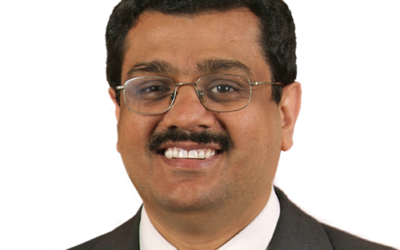Value versus growth
A related issue is that the value style of investing which most emerging market portfolios follow to some degree has made a comeback in the past year. “The value style is cheaper than growth, but while liquidity is plentiful, valuations have a reduced influence on investor decision making, though taking a look over the horizon there are reduced opportunities for growth outperformance at these more expensive levels,” says Van der Welle.
“Given the relative duration sensitivity of growth stocks, we would need to see a more notable increase in long real yields (when we envisage only a modest rise in 2022) before changing allocations. In the meantime, there are still tailwinds for growth stocks versus value.”
“Besides the bottoming out of the Chinese credit impulse, we would also like to see a depreciating dollar, which might also take some time. Possibly this would occur in the second half of 2022, given the benign or increasing rate differentials in favor of the US ahead of the Fed tightening. In all, we would be very surprised if emerging market stocks outperform developed market equities or growth stocks in 2022.”
The herd can be right
Finally, while Robeco is proud of the contrarian stance it often takes for asset allocation, stock picking, and whether to overweight or underweight sectors, sometimes it’s OK to just go with the flow, Graham says.
“The herd can be right and can change its mind often,” he says. “We need to be open-minded about the macro uncertainty over the path for growth, inflation and labor costs. In this environment we can expect many scenarios to be priced in next year: inflation, stagflation, disinflation, policy errors, stalling growth and Covid 4.0.”
“The key to navigation is to update your core scenario as the facts move, assess where market pricing differs with you, and then invest. This entails taking advantage of the herd’s oscillations, so it works in your favor.”
Free lunch may be over
And don’t forget that the ability of a multi-asset portfolio to diversify depends on the maintenance of historic correlations between the two main asset classes of equities and bonds, Van der Welle says.
“If inflationary impulses linger for the next six to twelve months then the bond/equity correlations could switch and therefore the ‘free lunch’ regarding diversification is over,” he warns. “The beauty of diversification is that the correlation between equities and bonds will always bail you out; if stocks fall, then so do bond yields, and the portfolio benefits from that instead.”
“But if this no longer holds true once rates start rising, then investing in other asset classes such as commodities or inflation-linked infrastructure will allow us to replace this diversification. We’ll stay true to what we think the economic outcome is going to be, though things do move from one side to the other very quickly; we might face a deflation scare next year.”
“If we start to get things priced in that we don’t believe in, then that’s where we would be looking to be more contrarian. One should keep an open mind about which inflation scenario unfolds, while overall macroeconomic uncertainty is still elevated from an historical perspective. That means that you could see big swings in markets that we can benefit from in 2022.”





